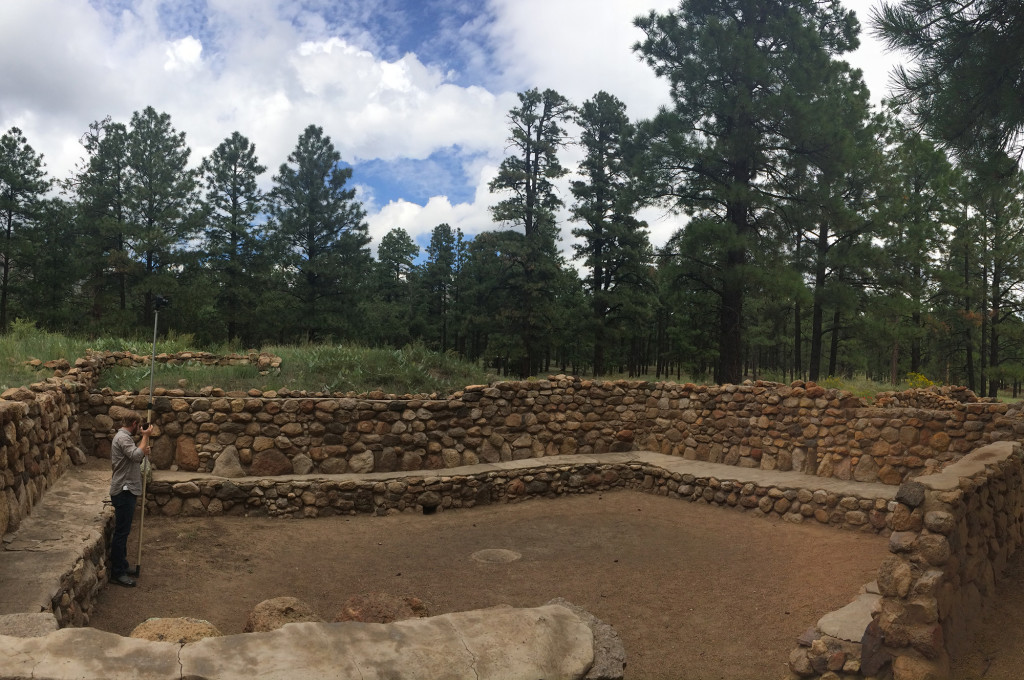Imagine being able to look at a historical site from every angle, measure the smallest details on the interior and identify how to preserve it without ever touching it.
Photogrammetry technology combines hundreds of overlapping high resolution images taken with a digital camera mounted on a pole to create a 3D color virtual model of a site. For an archaeologist, this is the future of documentation and a low cost alternative to laser technology such as LiDAR.
“This is a tremendous increase over our previous efficiency in mapping archaeological sites,” said Chris Downum, an NAU professor who began using photogrammetry last year.
“What this technology allows us to do is be better stewards in preserving these places for the future,” Downum said. “We want to document them in as close to their original condition as we can and then use that as a reference point for any further preservation or stabilization.”
Downum and his team of students have been documenting sites all over the northern Arizona region, which he said is one of the densest concentrations of archaeological sites anywhere in the world.
“We’ve been able to help our students prepare for careers in archaeology and get them equipped with the skills and the technological basis that they’re going to need to work in the 21st century,” Downum explained.
Chris Francis, an archaeology master’s student at NAU, spent his summer interning with the Coconino National Forest to create a 3D model of the Community Room at Elden Pueblo, an ancient Sinagua village located in north Flagstaff off of U.S. Highway 89.
“These places have been around for hundreds of years and we want to see them stay around for another hundred years,” Francis said. “This really allows us to go in and make precise measurements without being intrusive.”
Downum explained the importance of these sites to several of the region’s Native American tribes who he works closely with during the stabilization process. He said Elden Pueblo specifically is very important to the Hopi and believed to be part of the footprints of their ancestors.
Downum’s students also are working on a virtual museum with the National Park Service and the Museum of Northern Arizona that houses 3D models of sites and artifacts. He said the students get to work on their technological skills, collaborate with professional photographers and write interpretive materials.
“This gives our students a chance to engage the public in a setting that has a worldwide audience and allows them to interpret archaeology and cultural resources in a real way,” Downum said.



